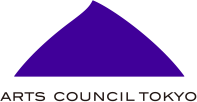2018/10/16
Considering Tokyo 2020 from the Perspective of Two “City of Culture” International Conferences
— The Asia Cities Culture Forum (ACCF) and the World Cities Culture Summit (WCCS)
Director of Center for Arts and Culture, NLI Research Institute / Board member of Arts Council Tokyo
Mitsuhiro Yoshimoto
ACCF 2018: Approaches to cultural clustering in major cities
The Asia Cities Culture Forum (ACCF) was held in Seoul from September 5th to 7th. It was hosted by the Seoul Metropolitan Government, and organized by the Seoul Foundation for Arts and Culture. The theme of this second edition of ACCF, which was held for the first time in 2017, was “Clustering the Culture; What would be the magnet?” The 16 delegates from Asia (including this writer) came from six cities: Bangkok, Chengdu, Hong Kong, Seoul, Taipei and Tokyo. There was also a guest speaker from London.
Though not a large-scale international conference by any means, the three-day program set down common themes concerning visions and roles of cultural policy in major cities in Asia, and provided a sense of the intention and ambition of the Seoul Metropolitan Government and the Seoul Foundation for Arts and Culture with regard to determining a future direction.
The open seminar—the main event—was held at BAESAN, a huge building formerly used as a factory and warehouse and remodeled as an art space and cafe-restaurant. Nearly 200 members of the public, mainly young people, attended and showed strong interest in this theme. The Seongsu-dong district, where the venue is located, used to be an area with a concentration of cement factories and workshops for handcrafted shoes; and now it’s a trendy spot where out-of-use buildings are being repurposed and cafes and galleries are springing up in quick succession. Recently new businesses tackling social issues are establishing bases in the area, which is now called “Social Venture Valley.”
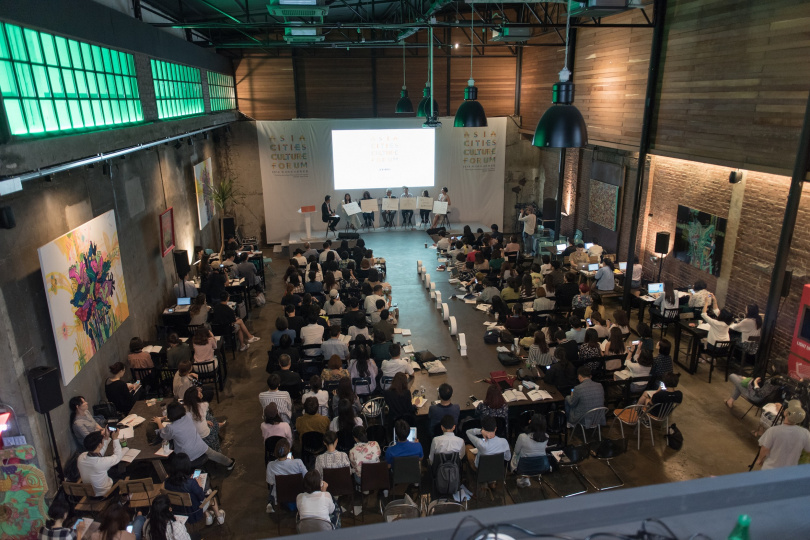 Open seminar at ACCF 2018 (photo provided by the Seoul Foundation for Arts and Culture)
Open seminar at ACCF 2018 (photo provided by the Seoul Foundation for Arts and Culture)
Many other interesting areas were selected as tour sites to fit the conference themes. For example, the Hongdae-ap district in central-western Seoul is an area that in the 1980s became a hub for the Seoul subculture, mainly led by students and graduates of Hongik University, the country’s top art university. In recent years, as a result of gentrification *1, the entire area is in the process of transforming, and non-governmental organizations are engaged in the preservation and practical use of cultural spaces such as live music venues and studios.
The area around Seoul’s west main gate, Seodaemun (Donuimun), is located next to Gyeongbokgung, a palace of the Joseon dynasty, and for that reason, development there has long been controlled. Recently a large-scale apartment complex development project was approved, and the Seoul Metropolitan Government has been developing the adjoining land as a space called Donuimun Museum Village in order to strike a balance between development and preservation. The city is preserving and refurbishing the district’s remaining old residences, which were built in a variety of styles, and making use of them as museums and workshops; and launching facilities such as the Donuimun Museum and the Seoul Center for Architecture and Urbanism and opening them to the general public.
Another location that made a lasting impression is the Oil Tank Culture Park. Located a stone’s throw from the stadium built for the FIFA World Cup held in Japan and Korea in 2002, the space was originally an emergency oil stockpile site built by the Seoul Metropolitan Government in 1976-78 in the wake of the first oil shock of 1973. At the time of the World Cup, the stockpile was deemed hazardous and moved to another location, and the site was then closed down. In 2013, however, there was an open call for ideas about new uses for the space, resulting in its rebirth as a cultural complex. The site was opened to the public as a cultural park in 2017.
The five oil tanks have been transformed into event halls and exhibition sites. A new community center was built in the form of an oil tank, using the tanks’ dismantled metal plates. A variety of cultural events and festivals are held here, using the gigantic tank space together with the park’s vast outdoor space.
Similarly, the Seoul Street Arts Creation Center, which I visited during last year’s ACCF 2017, is a former water intake facility on the Han River that was transformed into a space for art, even as its original structure was preserved as part of Seoul’s industrial heritage. The enormous, high-ceilinged space is ideal for circus arts. Together with the center’s outdoor square, it has become an important base for street arts in Seoul. These two facilities— elements of the industrial heritage that have been transformed into cultural spaces—represent a type of cultural hub that does not exist in Tokyo, and they may well be looked to as valuable precedents when considering ways to reuse the Tsukiji market, for example.
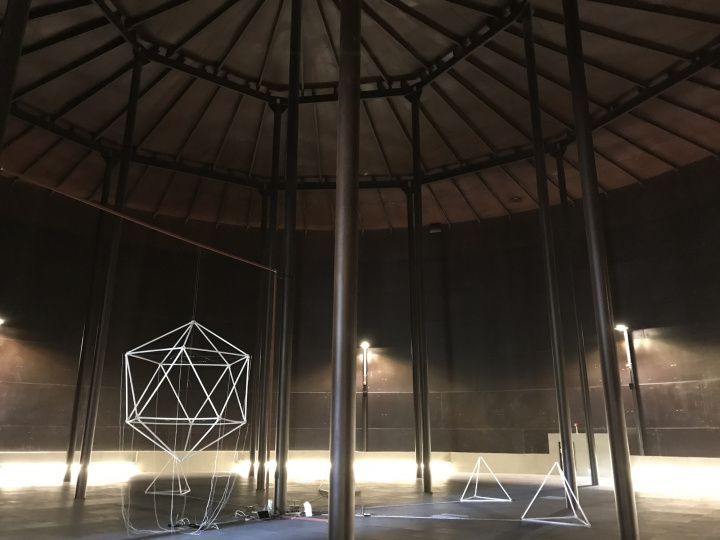 Oil Tank Culture Park, T4 (photo by the author)
Oil Tank Culture Park, T4 (photo by the author)
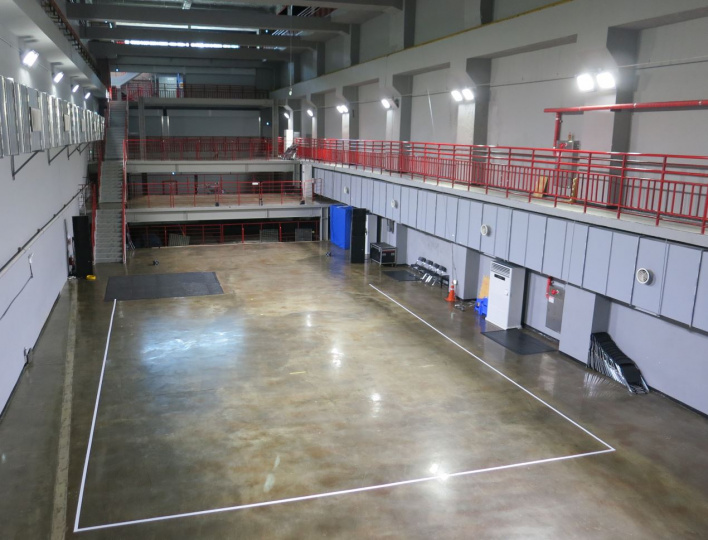 Seoul Street Arts Creation Center (photo by the author)
Seoul Street Arts Creation Center (photo by the author)
Not only in Tokyo, but in major cities around the world, large-scale urban development has led to increasing gentrification, and it is becoming more difficult to preserve creative hubs for artists and cultural spaces. This year’s ACCF addressed this issue head-on, so there was much to learn.
WCCS/WCCF: The cultural legacy of the London 2012 Olympics
Actually, ACCF was launched last year on an initiative inspired by the World Cities Culture Summit (WCCS), which is the cultural legacy of the London 2012. WCCS is planned by the World Cities Culture Forum (WCCF) *2, an international network which currently has 40 member cities in countries throughout the world. The summit is hosted by one of the member cities each year.
The first WCCS was held in London from July 30 (three days after the London Olympics opening ceremony) to August 1, through an appeal by London’s then-mayor, Boris Johnson. With the aim of reconsidering the roles that culture will play in major cities henceforth, the summit was held in conjunction with the release of the “World Cities Culture Report 2012,” which compared the cultural characteristics of 12 world cities. This report inherited and further developed the results of the much talked about “London: A Cultural Audit,” which in 2008 outlined an ideal vision of culture in London through a comparison of four cities: New York, Paris, Shanghai, and Tokyo.
“World Cities Culture Report 2012” was produced with the participation of 12 cities including Istanbul, London, New York, Paris, São Paulo, Shanghai and Tokyo. Using a wide range of data, the cities’ respective cultural situations were compared and analyzed. After the summit, the report was translated into Japanese by the Tokyo Metropolitan Government. *3 Eight of the 12 cities participated in the summit: Istanbul, London, Mumbai, New York, Paris, Shanghai, Sydney, and Tokyo. Tokyo is one of the founding members of WCCS/WCCF.
Media representatives from many countries who were in London to cover the Olympics were invited to the report’s press release, which was covered on NHK internet news. It made an impression on me that the reporters’ questions focused on Istanbul and Tokyo, which were candidate cities for the 2020 Summer Olympics at that time.
During the summit there were guided tours of cultural programs representative of London 2012 Festival, and dinners and luncheons organized as opportunities for exchange with directors of Britain’s leading cultural institutions and arts organizations. After the summit closed, a discussion was held among participating cities regarding the continuation of WCCS. Istanbul expressed interest in hosting the summit the following year, and WCCS led to its continuation up to the present.
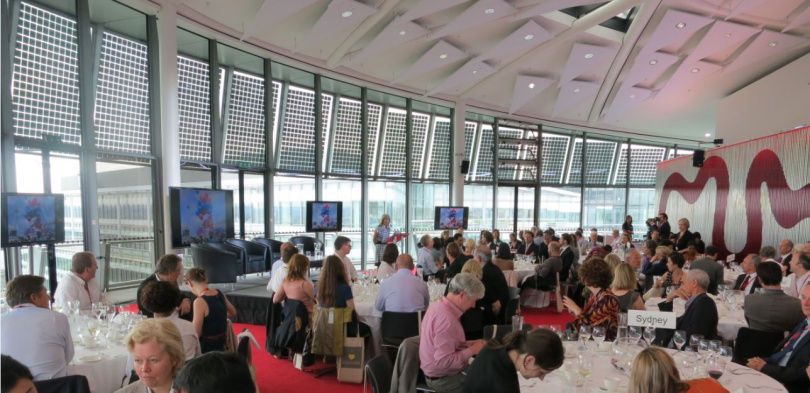 WCCS 2012 – Reception lunch in “Living Room,” located on the top floor of City Hall, London (photo by the author)
WCCS 2012 – Reception lunch in “Living Room,” located on the top floor of City Hall, London (photo by the author)
In other words, the WCCS that was held during the period of the London 2012 Olympic Games had two main objectives: to present cultural programs to the world’s major cities and explore possibilities for international cultural exchange with Britain; and to create a platform where participating cities could cooperatively consider, from an international perspective, an ideal vision of cultural policy in large cities.
After the Istanbul WCCS in 2013, the summit was held successively in Amsterdam, London, and Moscow; and in 2017, it was held in Asia for the first time, in Seoul. The city of Seoul held last year’s ACCF as a bold initiative aiming to build a uniquely Asian network of cities of culture in parallel with WCCS, which tended to be weighted towards western values.
From sharing and networking to practical activities
Originally, WCCS was an international conference where cultural policies and new cultural projects in participating cities were shared and discussed. Starting with the WCCS held in Moscow, however, the content changed to discussions of cultural issues common to the world cities, and collaborative exploration of solutions to these issues. For example, at the WCCS held last year in Seoul, the preset themes were “Making Space for Culture” and “Culture and Climate Change,” and numerous discussions on these themes were held in a workshop format.
The former theme was based on an issue faced by major cities throughout the world: the increasing difficulty in securing creation spaces for artists, as a result of urban redevelopment and gentrification. The latter theme was the exploration of possibilities for a cultural approach to the global issue of climate change—an issue that was also taken up in Moscow. Additionally, handbooks on policy and practice related to the two themes were published. These handbooks include policy approaches and hints related to each theme, and outline case studies of policy implementation in member cities.
Last year’s Seoul summit also saw the launch of the WCCF Leadership Exchange Programme, a cooperative project among member cities. Two types of exchange are offered: “One-way Leadership Exchange,” in which participants reside and carry out research for a fixed period in a different member city in order to identify policy ideas for solving challenges in their own city; and “Two-way Leadership Exchange,” in which participants explore solutions to challenges shared by two or more cities through reciprocal exchange visits. Under the program structure, member cities submit proposals and, if the proposals are selected, receive financial assistance from WCCF for travel and other expenses. Funding is provided by Bloomberg Philanthropies, which was established by former New York mayor Michael Bloomberg, and Google Arts & Culture.
In other words, WCCS/WCCF is in the process of shifting from sharing and networking to practical activities that focus on solving issues common to large cities throughout the world. The international conference that started in 2012 as a cultural program of the London Olympics has developed into a cultural legacy—an international platform in which 40 cities participate and collaborate. The results of the Leadership Exchange Program will surely be reported at the WCCS to take place in San Francisco this November.
The Tokyo 2020 Olympic Games are now less than two years away. Following a public call for projects that will represent the Tokyo Tokyo FESTIVAL—a cultural program organized by the Tokyo Metropolitan Government—judging was recently completed and 13 centerpiece projects have been selected. Various ideas are being considered with regard to the legacy of the cultural program, but unfortunately a clear road map has not yet been drawn. Thinking about the significant development of WCCS/WCCF over the six-year period since it began with the London Olympics in 2012, one can say that cultural programs based on intellectual exchange, which do not begin and end as transitory cultural events, are worthy of serious consideration.
Quite a few member cities of the World Cities Culture Forum (WCCF) have expressed the hope that the summit will be held in Tokyo. Since the summit in Moscow the year before last, more and more deputy mayors and other top-level officials from each city have participated. To communicate the appeal of the Tokyo Tokyo FESTIVAL and other Tokyo 2020 Olympics cultural programs to representatives of the world’s cities of culture, and enhance the cultural presence of Tokyo, it would be wonderful if the 9th World Cities Culture Summit (WCCS) of summer 2020 could be held here in Tokyo.
>For Japanese version, please click here.

